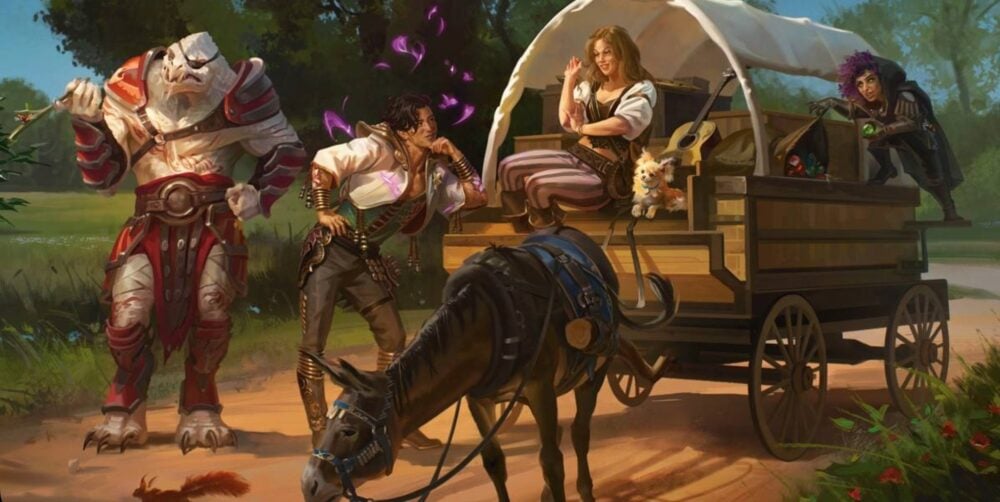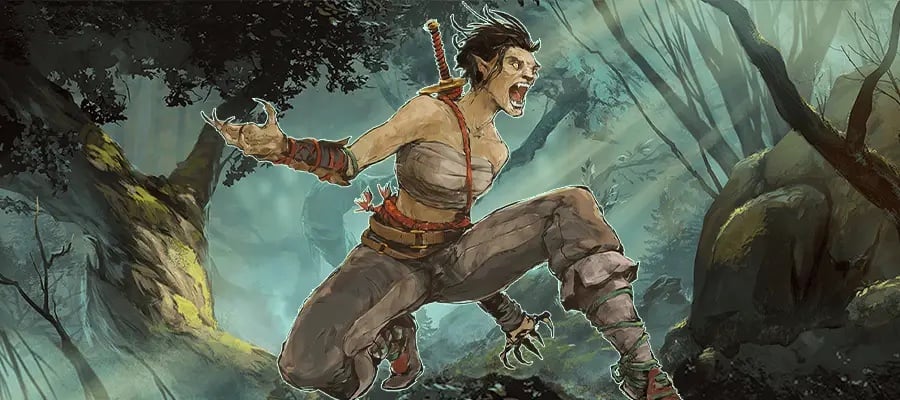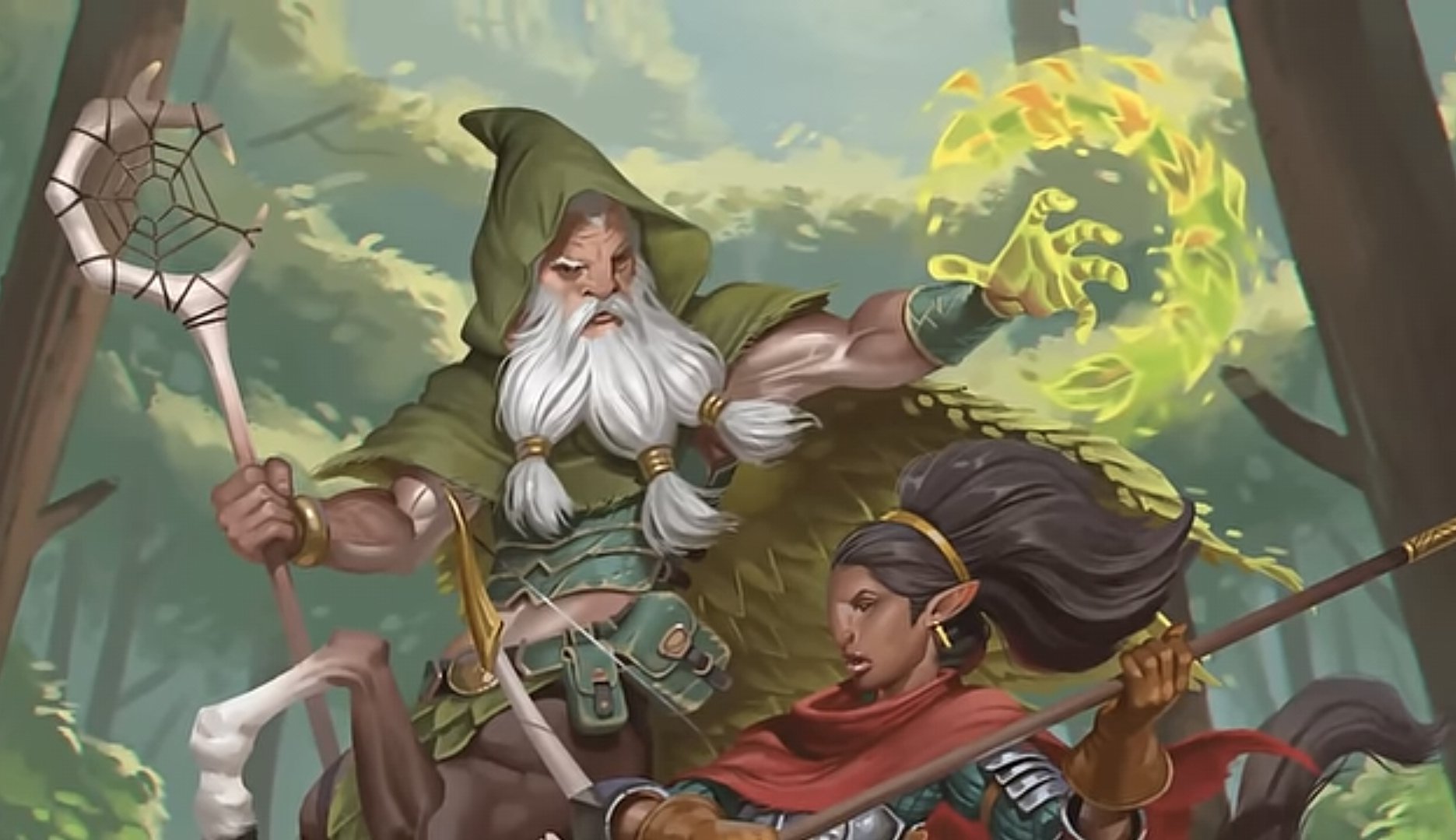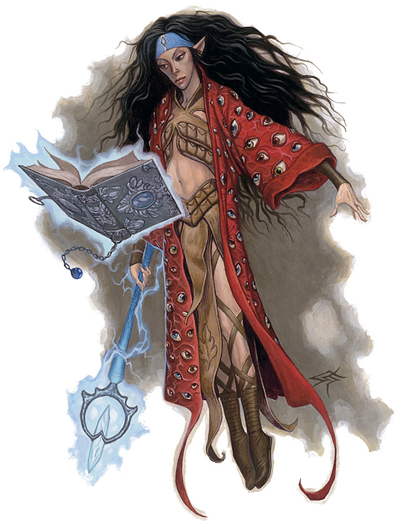Want your D&D character to have an arc? Character arcs are hard to plan for in an RPG, but these five tips might help you on your way!
D&D is at its heart, a storytelling game. Even when it was more of a wargame, the story was what kept people coming back. And it’s not hard to see why, we’re wired for story. We can’t help but tell them, even when interpreting what the results of dice mean.
But instinctual though it may be, there are still a few things that are tricky. Like having a character that grows and changes and has an arc. Typically, these aren’t really things you plan out to a tee—unlike in say, Star Wars, where a young farm kid in search of adventure instead finds his long-lost dad, one of the two most evil guys in the galaxy. You can’t plan for that in D&D, becuase it’s a collaborative game. The story grows as you play. And depending on what you’re doing, you might be so busy chasing the plot that you never have a chance to see your character grow.
How then can you get a character that grows and changes over the course of the sessions you play? The answer is fluid, but here are five tipsth at might help you.
Strong Wants

One of the biggest drivers of character is a want. Something concrete and measurable. Wanting to be the best swordsman in the world is vague, how can you determine that? But wanting to kill the guy who slew your father? You know when you’ve achieved that.
Character wants can run the gamut from dramatic stuff like revenge or to fall in love – but they can also be silly, like a dwarf who wants to taste the meat of every creature in a dungeon. Whatever your character wants, that can inform who they are – and just by having that, and trying to get what you want, you’ll have a jumping off point to see how your character changes as they try to get what they want. And that’s true whether it’s out of life, out of the adventure, out of the encounter.
Have a Flaw

Another good way to set your character on a trajectory is to lean into the idea of a character flaw. Maybe you are the Wizard who would go to any lengths to try and learn a new spell. Or maybe you are the Paladin who can’t help but imagine people at their best. Or are the Bard who can’t let anyone else have the last word.
Maybe you find your own flaws from the personality trait tables. Whatever the case, character growth often starts with a flaw your character needs/wants to overcome. Again, you kinda have to set the seeds for it yourself, and then let the course of the game water it.
Make It Hard For Yourself

Here’s the thing about D&D, you can change your character as easily as deciding you want to act differently. But that’s because your character isn’t a real person with years of psychological factors and real life to weigh down on them. Otherwise it would be easy for you to decide to drink more water or to not get a little $7 treat any time you pass within driving distance of a coffee shop.
But part of what makes a character arc feel satisfying is the journey of it. Watching the character struggle to learn a lesson. This can be funny, poignant, and everything in between. But it’s up to you the player to make that change hard for yourself, because you can’t guarantee that anyone else will. If your character has trust issues, you don’t have to abandon them the first time your friends don’t betray you.
Think of how long it takes to convince yourself that you weren’t, in fact, being weird after the hangout. The difficulty is part of it.
Involve the Other Players

Likewise a character arc is all about growth and that often means other people. We are all social creatures. Having friends is great. Having friends as an adventurer is even better because they probably have swords.
And just like you might see in your favorite actual plays, characters learn best by bouncing off of other people. It’s why you have to go out into the world and meet new people if you want to change. Otherwise, the Sleeper never Awakens, and you’ll never get to be the Kwisatz Haderach that way.
So involve the other players in some roleplay if that’s what they’re into. Say you’re a Paladin who has famously been a stick in the mud. You might become unstuck. Maybe there’s someone in the party who can finally convince you to let your hair down.
Stick That Landing

Last but not least, try to stick that landing. While growth and progress and a real life character arc might never be visible because change is incremental over time; change and a character arc in a story gets to be cool and tidy in a little bow that has narrative weight to it.
Truly all you have to do is say something like “before I would never have X, but now, thanks to all I’ve learned, I can Y.” Or find some way to highlight the change in play, and voila, character arc (internal) accomplished.
Happy adventuring!
Subscribe to our newsletter!
Get Tabletop, RPG & Pop Culture news delivered directly to your inbox.
Don’t Miss:
Read more at this site
